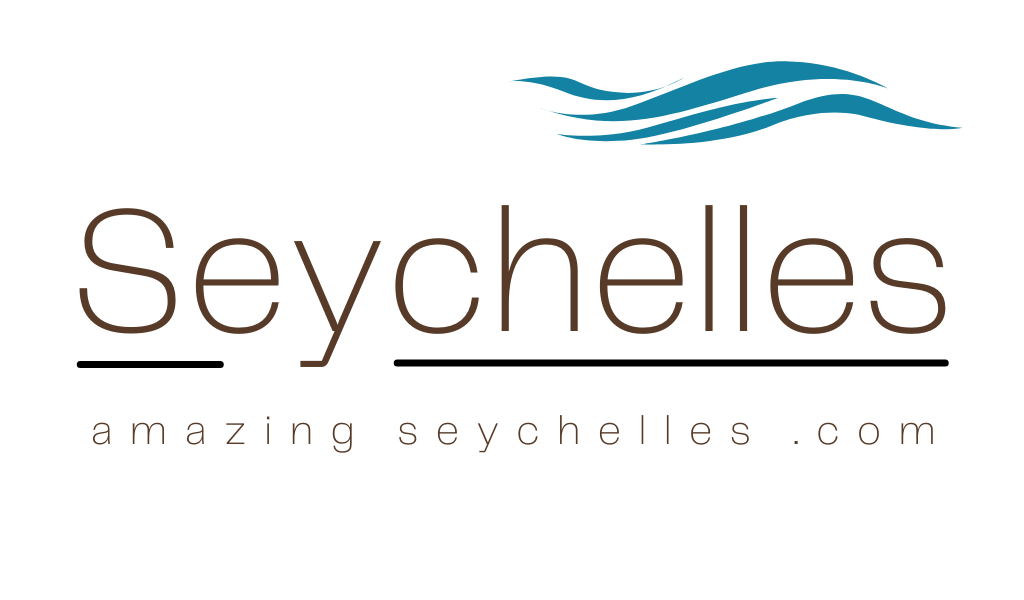A large number of reefs within the inner granitic islands of the archipelago of Seychelles could be entirely lost, unless concerted action is taken soon to control crown of thorns, warns Dr. Udo Englhardt, the expert on on the management of crown of thorns in a...
Seychelles Blog.
We intent to bring you updates on Seychelles travel offers provided by various travel partners around the world.
If you have a story on Seychelles, please share it with us.

Café des Arts Restaurant
Café des Arts Restaurant
Café des Arts Restaurant has earned its reputation as the best restaurant in Seychelles by creating outstanding mouth-watering dishes served in the most amazing setting. Seafood dishes are the main attractions. Attention to details, fresh ingredients served to perfection, and refined service give this restaurant its reputation.
Cafe des Arts sprawls along Anse Volbert’s beach. Rustic wooden cabanas perch on sandbanks.. The cafe is highly recommended for more private, intimate dining in larger groups.
By day you get a relaxed beach dining experience and by night the whole atmosphere transforms into an elegant high-class restaurant with a sumptuous décor.
The “Blue Octopus Bar” serves cocktails and other drinks. Vegan and vegetarian friendly food are available. The café serves Western, Chinese, Indian and rustic Creole dishes, adding a sophisticated, modern touch. Among the dishes served are grilled fish served with boiled potatoes, steak served with vegetables and many more. Three fish carpaccio, octopus and pumpkin gratin, creamy lobster and steamed grouper makeup just some of the delights on the menu. There’s also an extensive wine list to pair along with cocktails at the bar.

Cafe des Arts menu
A healthy quinoa and grilled vegetable salad sits next to an octopus and pumpkin gratin starter. An “Asian Corner” of sizzling beef tops the “Creole Corner” featuring the elusive local specialty, Kari Sousouri: a spicy fruit bat in a tangy curry sauce. A spicy fruit bat curry should stand out as the most provocative dish on the menu. The octopus gratin with lobster and the tuna carpaccio with a caper, garlic, and olive oil dip are highly recommended. The menu even includes sushi and sashimi. The prices are nevertheless prohibitive..
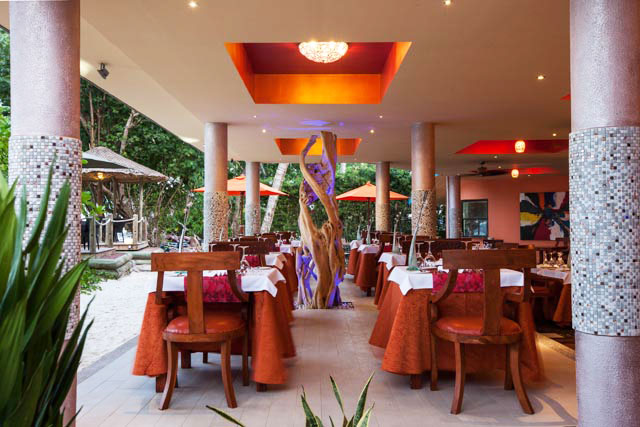
Cafe des Arts, cocktails and wine
Cafe des Arts serve brisk, strong cocktails effortlessly. The house margarita is alchemy: sharp citrus and fiery tequila crusted in a salt rim. The rooftop deck area is a lovely place for a cocktail.
Opening Hours
From Wednesdays through Mondays, the restaurant is open from 12:00 till 22:00. The cafe is closed on Tuesdays.

Berjaya Beau Vallon Bay Resort & Casino
Berjaya Beau Vallon Bay Resort & Casino
Berjaya Beau Vallon Bay Resort & Casino is a 3-star hotel conveniently located only 9.7km (6mi) from the centre of Mahe Island. Local places of interest include Beau Vallon Beach and Sainte Anne Beach. The resort is located on the beachfront overlooking to the breathtaking Indian Oceans.
Guest rooms
There are 232 air-conditioned rooms at Berjaya Beau Vallon Bay Resort & Casino. Guests of the hotel can make use of the following room facilities: coffee/tea maker, in-room safe, direct-dial phone, balcony and CD player. Additional amenities in the rooms include minibar. Beds: Extra towels and bedding items can also be found in the rooms. Bathroom amenities include hair dryer and makeup/shaving mirror. Entertainment: Berjaya Beau Vallon Bay Resort & Casino features in-room facilities such as premium television channel(s) and satellite television service and housekeeping services are provided.
Standard Room
All standard rooms are air-conditioned and have private showers, hairdryer, coffee and tea making facilities, mini bar, IDD facilities, TV with local reception and CNN, plus in-house video and music include ten non smoking rooms. Rooms are located in the main building on the first and second floors. There is no lift in the hotel.
Superior Room
All superior rooms are air-conditioned and have private baths and separate shower cubicles, hair dryers, mini bar, personal safe, coffee & tea making facilities, TV with local reception, CNN, in-house video and music include two non smoking rooms. All rooms are located on the ground floor of the main building with a sitting area.
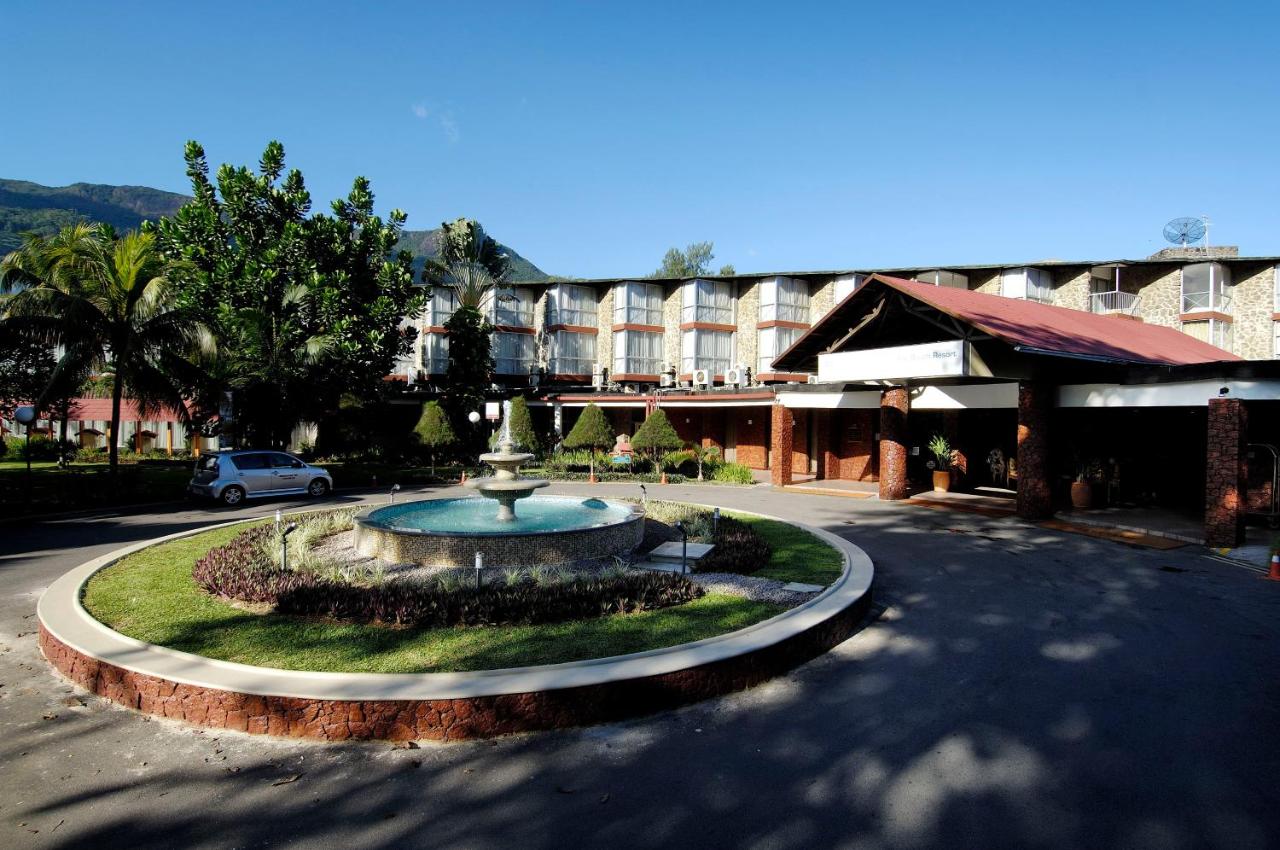
Deluxe Room
All deluxe rooms (Chalets) spread out in 8 buildings with air-conditioned and have private baths, private balcony, hair dryers, mini- bar, personal safe, tea & coffee making facilities, TV with local reception, CNN, in-house video and music .
Garden Suite
Garden Suite is air-conditioned and has private bath and separate shower cubicle, hair dryer, mini bar, personal safe, coffee & tea making facilities, TV with local reception, CNN, in-house video and a living room located on the ground floor of the main building.
Junior Suite (Chalet)
Their Junior Suite (Chalet) comprises of 1 large bedroom with kitchenette are air-conditioned and have private bath, balcony, hair dryer, mini bar, personal safe, tea & coffee making facilities, TV with local reception, CNN, in-house video and music.
Royal Suite (Chalet)
Their Royal Suite (Chalet) comprises of two large bedrooms with Jacuzzi, living room, modern kitchenette and are air-conditioned and have private baths, private balcony, hair dryers, mini bar, personal safe, tea & coffee making facilities, TV with local reception, CNN, in-house video and music.
Hotel Facilities
Hotel Facilities include restaurants, currency exchange, gift shop, hair salon, picnic area, tennis court(s). spa services, spa tub and laundry service. Facilities for meetings, conferences and seminars are available. The Hibiscus Room can accommodate for up to 40 persons in theatre style.
The Silhoutte Bar plays live music and the other bar is in the casino area. Sand Station Beach Bar serves in the beach area.

Twice a day, a free shuttle bus to the capital of Victoria is offered to hotel guests.
Le Canton Chinese restaurant offers Cantonese cuisine with a wide selection of ala carte menu. La Canton is open daily for lunch and dinner from 12h00 to 14h00 and 19h00 to 22h00 respectively. For Italian fare is served at the rustic and breezy open air restaurant, Pizzeria which serves pizzas, pastas, salads and snacks. Pizzeria is open daily for lunch and dinner from 12h-00 to 14h00 and 19h00 to 22h00 respectively.The Parrot Restaurant serves American buffet breakfast and theme buffet dinner or the Teppanyaki corner for traditional Japanese grill. The Parrot Restaurant is open daily for buffet breakfast and dinner from 07h00 to 10h00 and 19h00 to 22h00 respectively. Tandoori Restaurant serves Indian cuisine. Indian restaurent is open daily for lunch and dinner from 12h00 to 15h00 and 19h00 to 22h00 respectively.
Casino
The in-house gaming tables operates daily from 8:00 pm till 3:00 am. Slot machines are functional from 12noon till 03:00. American Roulette Blackjack, Caribbean Poker and slots are available. There are 55 slot machines and 16 gaming tables plus there are private rooms for high-betting game tables. All games are played in Seychelles Rupees (SCR) and American Dollar (USD). The minimum on gaming tables are two and five US dollars on Black Jack and Roulette respectively. There is a bar serving snacks, special drinks and unique cocktails in the casino floor.

Beau Vallon Beach
This beach is one of the largest and widest beaches in Seychelles. The beach lends itself extremely well to watersports in a way that the smaller, secluded coves found elsewhere in the country do not. Here, visitors can surf and water-ski on the waves, and it is precisely this level of activity that caused a small town to spring up around the beach. This is a convenient spot as everything you need can be found within walking distance of the beach. Despite this bustling atmosphere, the beach itself is not particularly crowded, even during high season. On clear days, it is possible to see all the way across the ocean to the Seychelles’ third-largest island, Silhouette.
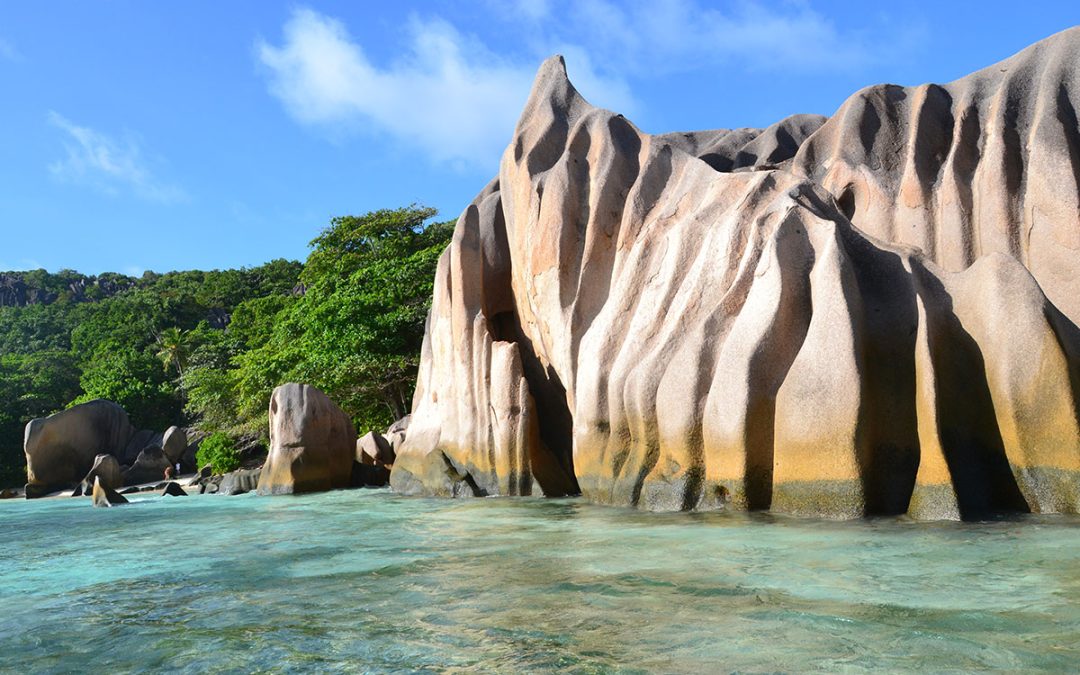
Anse La Reunion Granite Rocks
L’Union Estate
Anse La Reunion Granite Rocks is a natural wonder and is considered a national monument. The rocks cover an acre of land, forming part of the L’Union Estate. L’Union Estate houses was a traditional copra mill with a kiln. Oldest specimens of tortoises are found in this estate. This property also houses the oldest Cemetery of the former settlers on La Digue and also one of the most untouched beaches of the Seychelles and one of the most photographed beaches in the world.
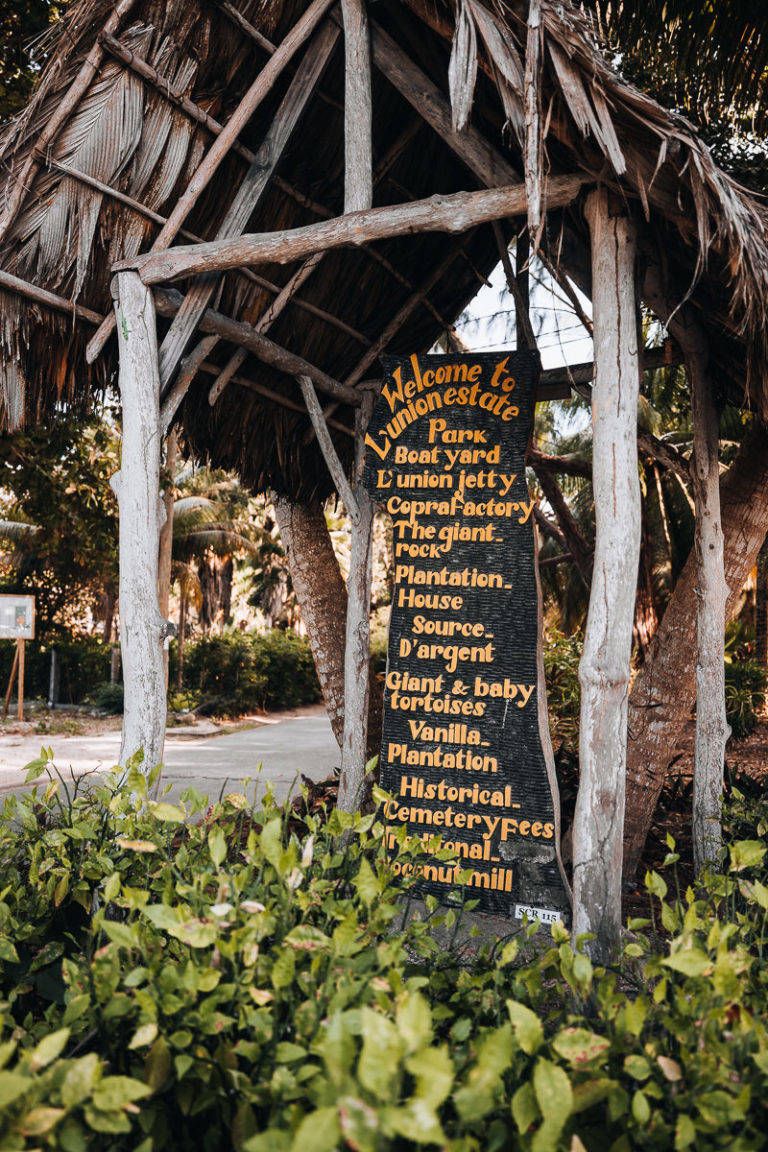
A large part of the L’Union Estate Park is a vanilla plantation and in the rear area there is a farm where chili, aubergines, passion fruit and much more are grown. There is also a “Boat Yard” on the premises, here you can see how boats and ships are manufactured and repaired.
The Plantation House has now been transformed into a small museum with a small art gallery.
Granite Rocks
This extremely impressive monolith is located at Anse L’Union on the west coast of La Digue. The granite boulder was formed around 750 million years ago, by the slow cooling of molten rocks (magma) deep within the earth’s crust which gave it its especially large crystals. The magnificent shape of this formation is due to its long exposure to the natural elements of weather.
Just below the granite monolith is the tortoise pen. Here, you can see some of the largest tortoises on earth. The Aldabra Giant Tortoise is one of the longest living animals on earth. They can live up to 200 years and weigh over 300 kilograms.
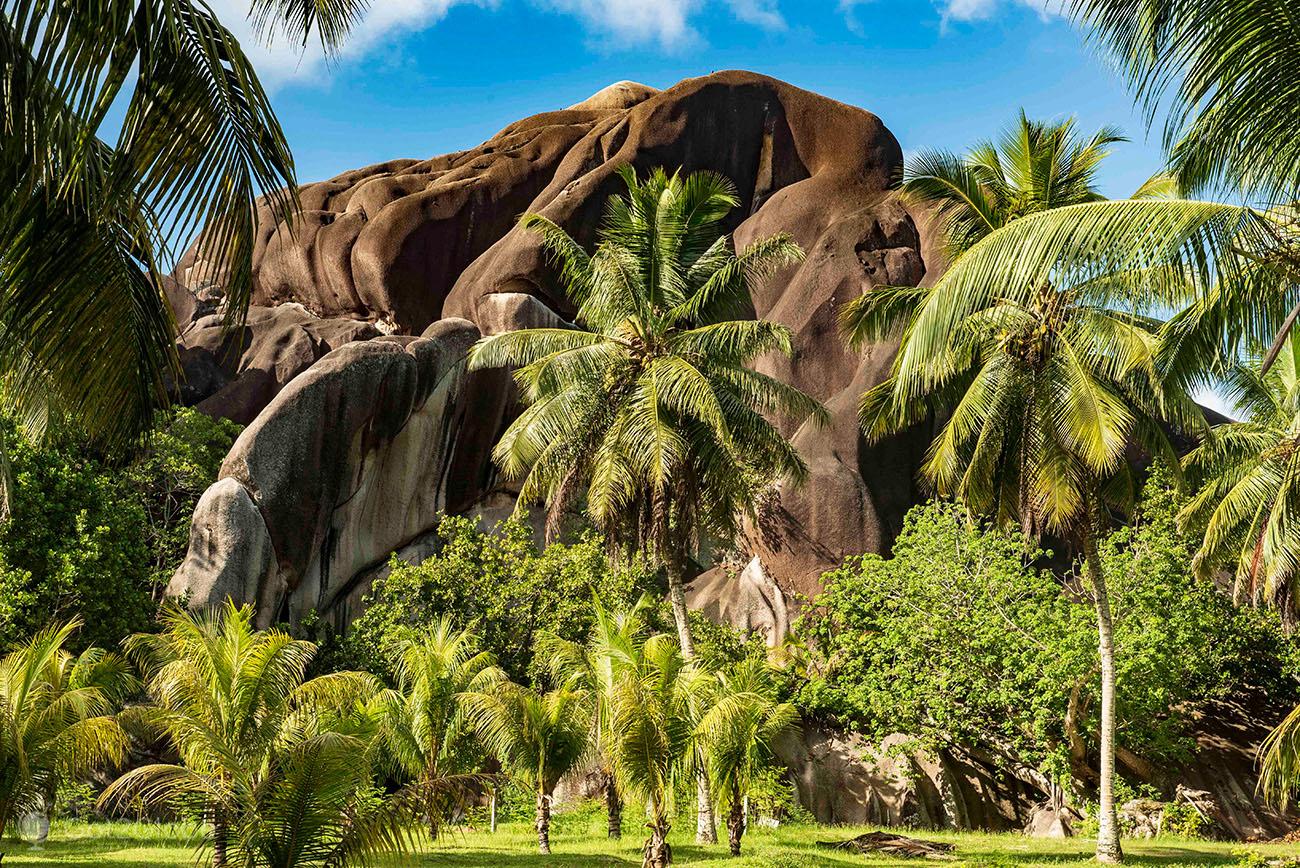
Souvenir Kiosks
There are a couple of small souvenir kiosks in L’Union Estate. These sellers have everything from local spices and rums to coco de mer nuts you can take home.
Old Pier Cafe
Old Pier Cafe is set on the waterfront just near the Old Pier, another great photo spot in L’Union Estate. Old Pier Cafe offers Italian, American, Cajun & Creole, European, and Asian cuisine. The Café serves grilled ribs, grilled tilapia, burgers, fish and chips and many more and the customers can choose the additions and sauces they want. The cafe also offers its customers a lot of vegetarian options on the menu, as well as some healthy options for its dieting customers.
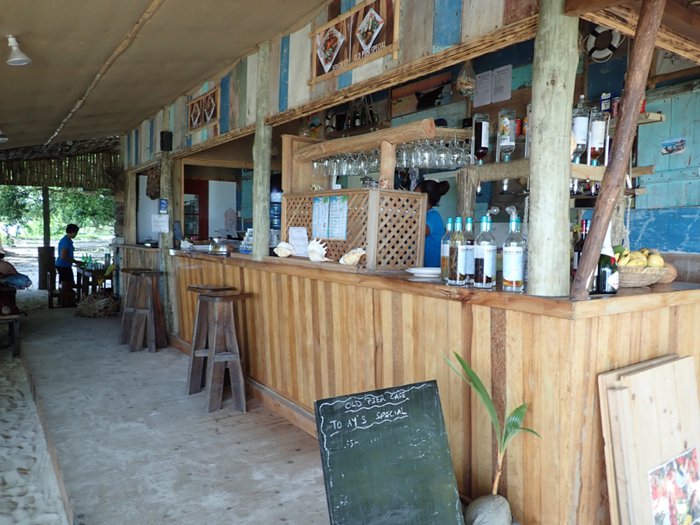
Veuve reserve, Anse Reunion
Nature lovers will have the opportunity to seek out the rare black paradise flycatcher, once thought to be extinct but now protected in the La Digue Veuve Special Reserve which is also home to two rare species of terrapin.
The Veuve Information Centre manages the Veuve Reserve and the environment of La Digue and has available most information on the unique flora and fauna of La Digue, especially of the Paradise Flycatcher or “Veuve”.
La Digue
La Digue island is forty kilometres (25 miles) from Mahé and 7 km (3.5 miles) from Praslin. It is the fourth largest island in the Seychelles after Silhouette. This granite island receives its visitors mainly by boat at the quaint jetty at La Passe and is a popular destination for holidaymakers wishing for a taste of the traditional. Bicycling is the most common mode of transport on the island.
The Beach
The beach is very popular, with its dazzling white sands and shaded by craning coconut palms. The beach can get crowded partially because the beach area shrinks at hide tide. Coming in the early morning and returning in the late afternoon is a great way to avoid many of the island’s day visitors. During the day a couple of shacks sell fruit and refreshments, and there are glass bottom transparent kayaks for rent.
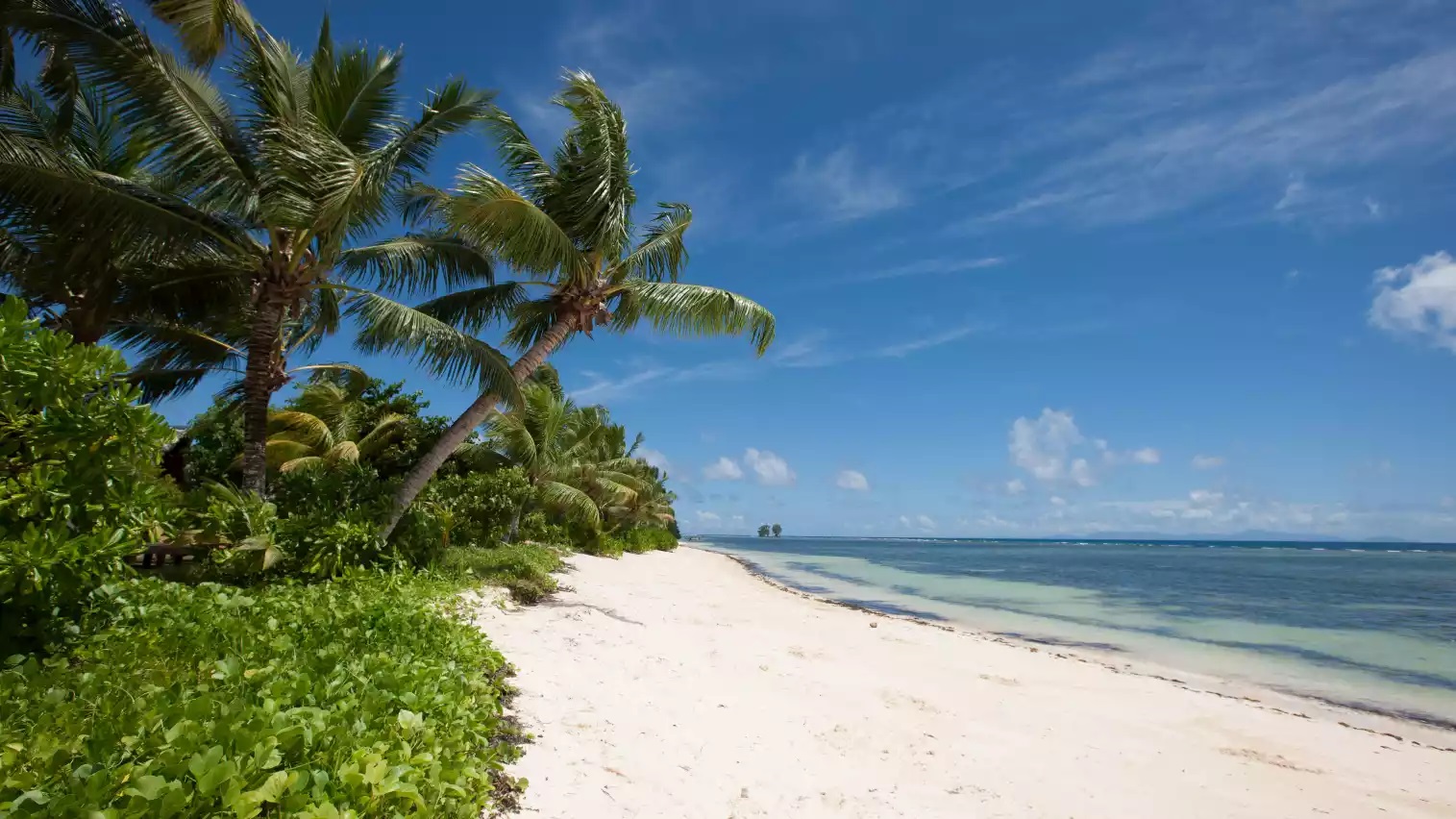
The beach is protected by a spectacular coral reef and is lapped by calm and shallow waters that allow you to bathe in total safety. If you want to swim or snorkel, you have to wait for high tide.
Eustache Sardes House at La Digue
This is a National Monument. This is predominantly a timber constructed house and one of the real remaining examples of its kind in Seychelles.
The house once stood on large masonry pillars, but now rests on a habitable concrete basement. It has a façade verandah, with ornamental wooden balusters mansards on its roof providing adequate and habitable attic space. The design allows natural ventilation.

Where To Stay On La Digue
Hotel Chateau St Cloud is a mid-range 3 star hotel in an excellent location close enough to both the incredible southwest beaches and the port.
Le Nautique is a high-end hotel rated as one of the best waterfront accommodations on La Digue. It offers traditional Creole architecture with modern comforts including king-sized beds and rain-showers. There is an amazing outdoor restaurant and beautiful garden.
Dream Holiday is a self catering budget hotel located on the northern end of the island very close to the ferry terminal. This location is close to the bike rental shops, snack stores and even supermarkets. This hotel offers queen rooms with air-conditioning, TV, private bathrooms, and even a balcony.
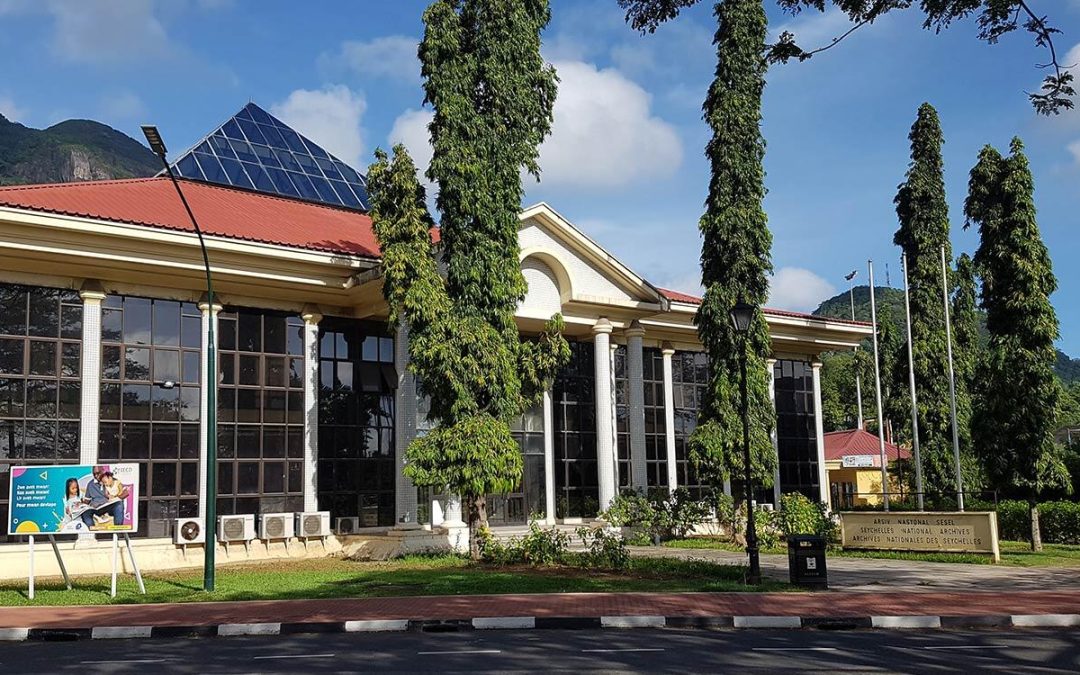
Seychelles National Archives
Seychelles National Archives
Seychelles National Archives is the official guardian of historical and government documents. The Archives collects, stores and conserves the history of Seychelles. The Archives contains the originals of the treaty of capitulation, government files, maps, paintings, photos, film, audio, stamps and money etc. It also contains history and documents during Seychelles colonization leading up to independence.
The mission of the Seychelles National Archives is to collect, preserve and make accessible archival documents of enduring value through the use of the latest information technology.
Of particular interest to the tourists is a vast collection of photographs of times gone by.
National Archives has an overseas office in France at 29 chemin du moulin de Testas – CS50062, 13182 Aix-en-Provence, CEDEX 5 France.
History of Seychelles National Archives
The earliest mention of the Seychelles National Archives is found in the instrument of capitulation of Seychelles that was executed by the French Commandant, Chevalier Quéau de Quincy, and the British Captain Henry Newcome of H.M.S. Orpheus on 17 May 1794. Although there was provision in the law for the preservation and maintenance of the national records, nothing was done for another 10 years. Then Mr. Lablache, an individual who understood the need to protect and classify the country’s archives requested that he be appointed as the executor of the archives. This request was refused.

During the British colonial rule some efforts were made to inventorize the documents. But it was found that all records during the French administration were transferred to France. There is reference to a fire and the great landslide of 1862 destroying a lot of archives. However, the destruction of archives could also have been due to the negligence of administrators. Seychelles National Archives Ordinance 27 of the 7th November 1964, was not implemented for another three years. In September 1961, the first Seychelles archivist, Captain William Tindall Wilfred Webb, was appointed as Seychelles’ first archivist. A temporary depot was allocated to house the documents. Captain Webb was a retired officer of the Army of India and the Political Services of Bombay. He held that post for seven years until his death in July 1968 at the age of 78 years old. During his tenure he selected, identified and inventorised the documents for the archives. The detailed inventory was published by l’OSTOM (Office pour la Recherche Sientifique et Technique Outre-Mer) in 1982, with some addition by his successor, Mr. Henri Mac Gaw. The latter joined the National Archives as Assistant Archivist in 1964 and assumed the direction of the National Archives from 1968 to 1987 when he was succeeded by Mr. Alain Lucas. In 2002, Mr. Peter Lalande took over until January 2008 and Mr. Alain Lucas once again took up the post of director.
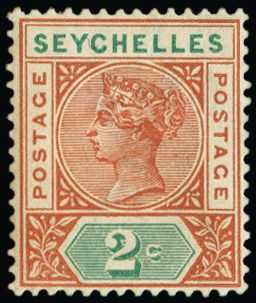
Until 1982, the archives were housed in two rooms on the ground floor of the Carnegie Library (now the Natural History Museum building) in Victoria. After that, it was transferred to the La Bastille at Union Vale. This building was a private home that was acquired by the Government. This building, now a national monument, first housed the Ministry of Plans and Public Works followed by the Ministry of Education. After that National Archives occupied the prefabricated annex that permitted the storage of about 30 linear meters of records.
The National Archives and the National Library have created a mini committee to monitor the level of humidity and temperature to ensure a proper environment for documents and books.
In 1991, a new Library building was constructed and the archives moved in one wing of the National Library, now called the National Cultural Centre. After the outbreak of fungus in 2012 the archive’s location was moved to the Helena Complex in Port Island. The place is now equipped with wall and ceiling ultraviolet sterilisers, dehumidifiers and an ozone generator, and a treatment system that uses ozone and UV (ultra violet) light to purify the air and in turn eliminate the fungus. All legal documents are now housed in the Seychelles Magistrates’ Court in Victoria and data entry is in the Providence Atoll.
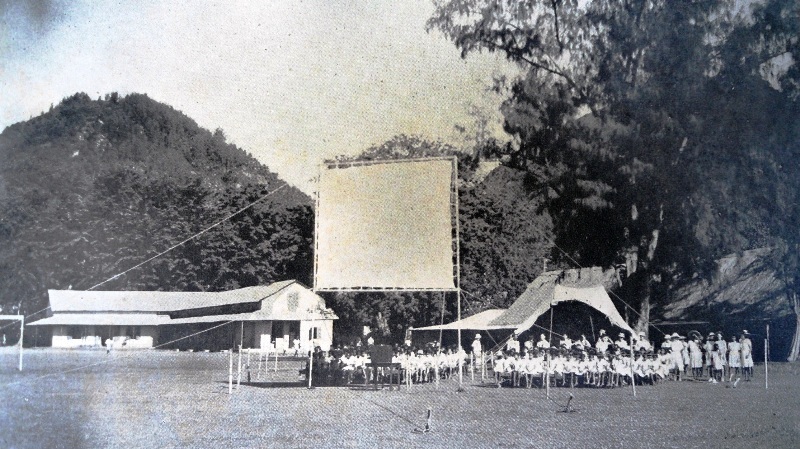
Functions of Seychelles National Archives
Records Management
Records Management unit is responsible for the proper classification, storage and overall management of semi-current or semi-active records. Concerned ministry will decide which records are to be archived and will pass them on to the archives. Usually Bank notes, stamps, departmental and ministerial reports, political, sports, cultural, religious magazines, all local newspapers like Nation, Isola Bella, Rising Sun etc. are archived.
The Outreach Programme
The Outreach Programme Unit disseminates information about the history of Seychelles in schools, organised exhibitions at national and district level.
The Research and Reference Unit
The Research and Reference Unit is responsible for dissemination of archival information to the general public and making available documents in digital and textual formats for immediate consultation or for approved replication upon request.
The Digital Conservation Unit
The Digital Conservation Unit is responsible for electronic archival of documents and maintaining the database, network and website.
The Audio-visual Unit
The Audio-visual Unit is responsible for creating audio-visual presentations.
The Binding and De-acidification Unit
The Binding and De-acidification Unit provides the technical know-how for the preservation of archived material for a long time.
Family history research
Family history research is possible for self search for a fee of SR 350 and SR 500 if you require the archive staff to do the search. The search facility is available from Monday to Friday from 8:00am-4:00pm and on Saturdays from 9:00am to12:00pm.

Mission Lodge
View from mission lodge
Mission Lodge Lookout is a popular hotel with 5 star rating, located at Sans Soucis road, Victoria, Mahe Island, Seychelles in the city of Victoria. Mission Lodge is an easily accessible place with an outstanding view over the beauty of Mahé’s west coast. You can reach Mission Lodge by road close to the highest point. Mission Lodge is a superb lookout with spectacular views of central Mahé and the west coast, and some low-slung stone ruins slowly returning to the forest. The Mission Lodge is surrounded by interesting rain forest. It is located just below the summit of Sans Soucis.
UNESCO world heritage site
Mission Lodge is a UNESCO world heritage site since 2013. Queen Elizabeth II inaugurated this lodge in 1972 and had tea at the viewing platform. It is only a 6-kilometer drive from the city center of Victoria, Seychelles’ capital. It is an historic site located within Morne Seychellois National Park.
Mission Lodge History
After being abandoned by the previous Russian operator, the Lodge was taken over by the Department of Tourism, through the Seychelles Heritage Foundation. Port Glaud waterfall was also abandoned by the same Russian investor but this site is not easily accessible.

There have been many instances where visitors were robbed and even mugged and cars broken into, resulting in negative publicity for the entire destination. Visitors and travel operators complain of lack of security in the hotel.
Mission Lodge ruins
You can see some of the ruins between the small parking area and the path to the amazing viewpoint. The mission ruins are the ruins of the Industrial school established in 1875 by the Church Missionary Society for the children of liberated slaves. It was called Venn’s town after Henry Venn (1796-1873). He was an Anglican evangelist who worked for the Church Missionary Society which was founded in 1799 and which established orphan asylums at Pamplemousses in Mauritius and at Freetown in Sierra Leone.
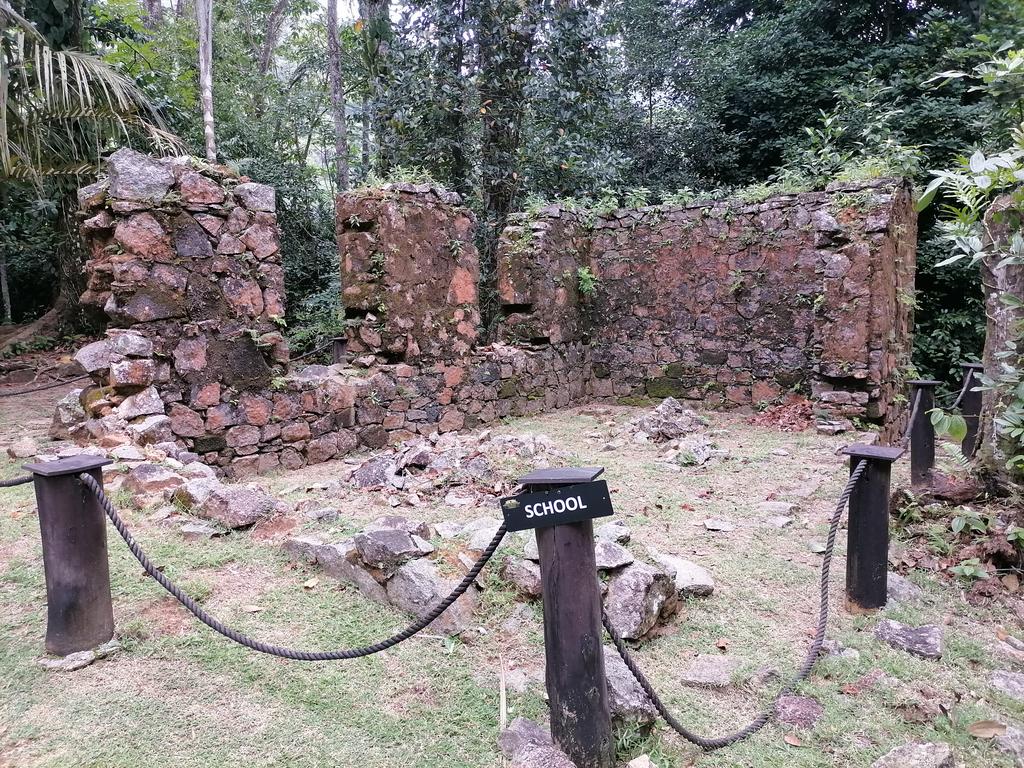
African Slave Trade
During the eighteenth century thousands of African slaves crossed the Atlantic ocean in chains to become the foundation of the New World economy. Hundreds of them ended up in Seychelles to work as labourers on cotton and coffee plantations. In 1814 Britain took possession of the Seychelles. In 1807 British parliament adopted the Bill of abolition of slave trade, which was applicable to the whole of the British empire. But the lucrative slave trade continued in Seychelles until the Emancipation act of 1833.
However, along the East African coast, the slave trade continued unabated. Slaves were brought from the interiors of Africa – most of them were obtained for a few yards of calico cloth! The slaves were taken to the Western side of Lake Nyasa in Malawi and then shipped to Kilwa on the coast of Tanzania where they were taken to the slave market in Zanzibar and sold for around £100 to £120 each to Arab and Persian dealers. Determined to put an end to this illicit and despicable slave trade, British Navy Ships scoured the waters of the Indian Ocean and intercepted Arab dhows and confiscated their cargoes of slaves and brought them to Mahé in Seychelles. On the 14th May of 1861 the first shipment of 252 liberated slaves arrived in Seychelles on HMS Lyra commanded by Capt. Old-field. Continuation of this activity resulted in the arrival of a total of 2,816 liberated African slaves between 1861 and 1874 to the shores of Mahé.
Slaves in Seychelles
Now Seychelles had to do something to settle these slaves down in Seychelles. Church Missionary Society undertook the task of settling these slaves. In May 1875 the civil commissioner of Seychelles Charles Spencer Salmon (1832-1896) agreed to lease 50 acres of land at Capucin Sans Soucis to the Church Missionary Society. But this needed the approval of the governor of Mauritius, Arthur Purves Phayre (1812-1885) who travelled to Seychelles to draw up the conditions under which he would authorize the assignment of the land. His conditions inter alia stipulated that an annual rent would have to be paid for over a period of ten years and that no child over 16 years of age should be retained against his/her will.
The Industrial Institution at Venn’s Town
The Industrial Institution at Venn’s Town was officially opened on 20th March of 1876 and was under the supervision of Rev. William Barlett Chancellor, the Swahili-speaking acting civil chaplain. By the end of 1877 there were 55 children, 35 boys and 20 girls living in the settlement. The school teachers were Mr Robert Pickwood who was a former police officer in Victoria and Mr Henry Morris Warry (1858-1927). The main buildings consisted of a large and spacious Mission cottage which was a bungalow with a verandah, two dormitories of 100ft by 25ft, one for the boys and one for the girls, a few outhouses, kitchens, washrooms and a dozen huts for the labourers who were engaged to clear the land. The buildings were constructed of timber and covered with screw pine leaves. Water was obtained from the nearby river by means of bamboo pipes and stored in basins of limestone coral.
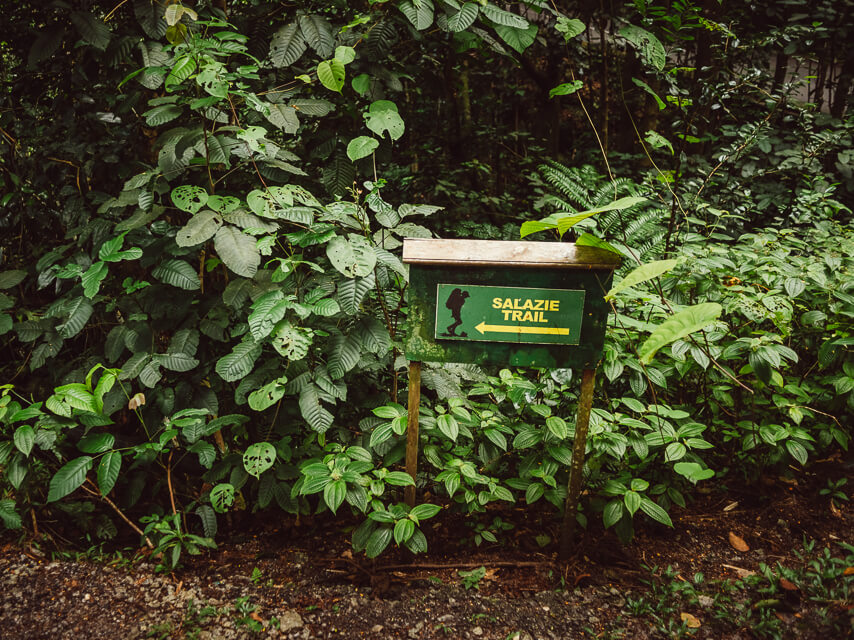
In 1885 Warry and his wife left and were succeeded by Mr Edwin Lucock and his wife Martha who took charge of the Institution until 1889. Some boys and girls ran away because of harsh punishment given occasionally. The children woke up early for prayers and breakfast after which they attended lessons which consisted mainly of bible stories and psalm-singing. In the afternoon, they engaged in woodwork and tended the coffee, cocoa and vanilla plantations, the revenue from which went to the upkeep of the mission settlement.
A cemetery further away accommodated the little bodies of those who tragically succumbed to the then incurable infirmities of health such as diphtheria or appendicitis. Edwin and Martha Lucock’s two years old son Sidney died in April 1888 and was buried there.
During its seventeen years of its existence many visitors to Seychelles trudged up the mountain path to the Industrial school at Venn’s Town to discover how the African children were getting along. One of such visitors was the Victorian Lady, painter and globetrotter Marianne North (1830 – 1890). She made many paintings of Venn’s Town, forty-three of her paintings are now in the Natural History Museum in Victoria.
The mission at Venn’s Town closed in 1894, because by then, more schools were being built on Mahé which accommodated the African children, and the slave dealers had ceased their ignoble transactions. Seventy-seven years later, on March 20th 1972 when Queen Elizabeth II came to Seychelles for the inauguration of our International airport, she was driven up here to visit these melancholy ruins and to open the Mission Viewing Lodge which treats the visitors to a breathtaking Panorama of the east coast below.
Sponsored ad.
